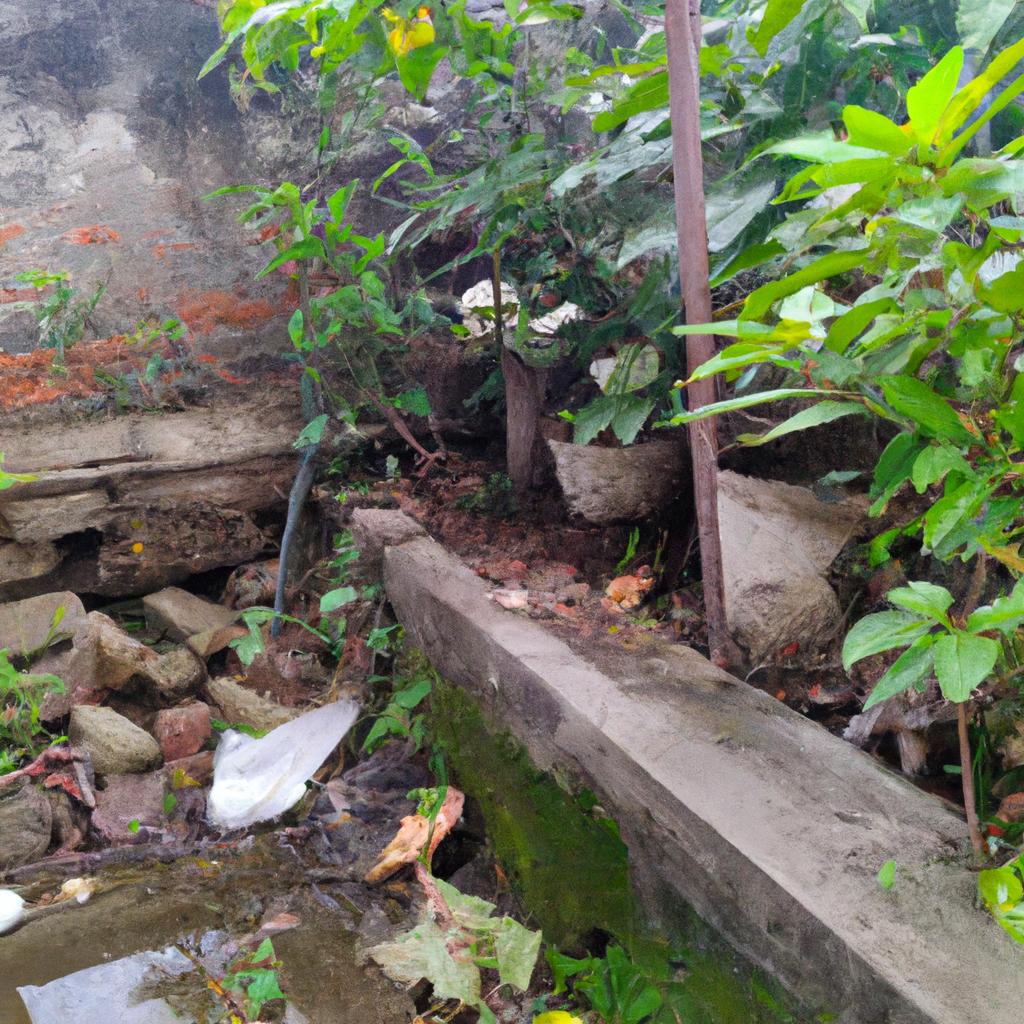Do you have a neglected garden that’s no longer a sight to behold? Perhaps it’s overrun by weeds or lacks the vibrant plants it once had. Seeing your garden in such a state can be disheartening. But fear not! With some effort and a touch of love, you can revive your garden and transform it into a beautiful haven of tranquility. Join us in this article as we explore the art of garden restoration and how you can create a space that radiates beauty and promotes relaxation.
Assessing the Garden

The first step in restoring your garden is to assess its current condition. Take a walk around your garden and observe what needs attention. Are there areas that are overgrown? Are there plants that have withered away? Do you notice any excessively dry or wet spots? Identifying these issues will help you develop a plan to address them.
One of the significant challenges in garden restoration lies in dealing with poor soil quality. Over time, soil can become compacted, hindering plant growth. It can also become nutrient-deficient, stunting the development of your plants. To improve the soil, consider adding organic matter like compost or well-rotted manure. This will loosen the soil and provide the essential nutrients your plants crave.
Another critical aspect to consider during your assessment is drainage. If your garden is too wet, installing drainage systems can prevent waterlogging. Conversely, if your garden is too dry, an irrigation system will ensure your plants receive adequate water to thrive.
By assessing your garden’s needs, you lay the groundwork for a successful restoration project. In the next section, we’ll delve into the planning phase.
Planning the Restoration

Before diving into the physical work, it’s essential to have a solid plan in place. A well-crafted restoration plan will keep you focused on your goals and ensure that you achieve the results you desire.
Start by setting clear goals for your garden. What vision do you have for your garden once the restoration is complete? Do you envision a garden brimming with flowers or a flourishing vegetable patch? Once you’ve set your goals, you can develop a plan to bring them to life.
Your restoration plan should include a list of tasks that need to be completed, along with a timeline and budget. Consider the tools and materials required for the project and factor in their costs. Additionally, consider the long-term maintenance your garden will require. If time or expertise is an issue, hiring a professional can help you maintain your garden’s beauty.
By dedicating time to planning, you can ensure the success of your garden restoration project. Next, we’ll explore some techniques you can use to rejuvenate your garden.
Garden Restoration Techniques

Restoring your garden involves employing various techniques to breathe life back into it. These techniques include improving soil quality, selecting and placing plants strategically, installing watering and irrigation systems, and maintaining your garden diligently.
Enhancing your soil’s condition is crucial to provide your plants with the nutrients they need. Incorporating organic matter, such as compost or well-rotted manure, will loosen the soil and nourish your plants.
Thoughtful plant selection and placement are also vital in the garden restoration process. Choose plants suited for your climate and soil type, and consider the amount of sunlight your garden receives. Additionally, pay attention to the plant’s size and how it fits into your garden’s overall landscape.
A reliable watering and irrigation system is essential to ensure your plants receive sufficient water for growth. Installing an irrigation system will guarantee consistent watering, especially during hot and dry weather.
Lastly, regular garden maintenance plays a pivotal role in its long-term beauty and health. Regular pruning, weeding, and pest control are necessary to keep your garden flourishing year after year.
In conclusion, garden restoration can be a challenging yet rewarding endeavor. By assessing your garden, setting goals, and employing the right techniques, you can rejuvenate your outdoor space and create a beautiful haven for relaxation. At TooLacks, we’re passionate about all things nature, gardening, and animals. We hope this article has inspired you to embark on your garden restoration project and create a stunning outdoor space for you and your loved ones to enjoy.
Overcoming Garden Restoration Challenges

While embarking on a garden restoration project can be incredibly rewarding, it’s not without its challenges. Here are some common challenges you may encounter and tips to overcome them:
Dealing with Pests and Diseases
Pests and diseases can wreak havoc on your garden, undoing all your hard work. To prevent them from taking over, keep your garden clean and tidy, promptly remove any dead or diseased plants, and opt for natural pest control methods whenever possible. When using chemicals, follow instructions carefully and use them sparingly.
Adapting to Weather Conditions
Weather conditions can be unpredictable, and your garden must adapt accordingly. During droughts, increase watering frequency, while during heavy rains, take measures to prevent waterlogging. Choose plants well-suited to your climate and soil type to help your garden thrive in changing weather conditions.
Overcoming Budget Constraints
Garden restoration can be an expensive undertaking. To overcome budget constraints, plan your project meticulously and stick to your budget. Consider using recycled materials, growing plants from seeds, and doing some of the work yourself to save money.
By being aware of these challenges and taking proactive steps to overcome them, your garden restoration project is sure to be a success.
Conclusion
Garden restoration is a remarkable journey that breathes new life into your outdoor space. By assessing your garden, devising a plan, and implementing the right techniques, you can create a haven of beauty and tranquility.
The benefits of garden restoration are plentiful. Not only does it increase your property’s value, but it also enhances your mental well-being and provides an opportunity to connect with nature.
At TooLacks, we encourage our readers to embark on their own garden restoration projects and enjoy the countless benefits that gardening offers. So why not give it a try? With a little effort and a lot of love, you can create a garden that brings you joy for years to come.
To learn more about garden restoration and explore other nature-inspired topics, visit TooLacks.



